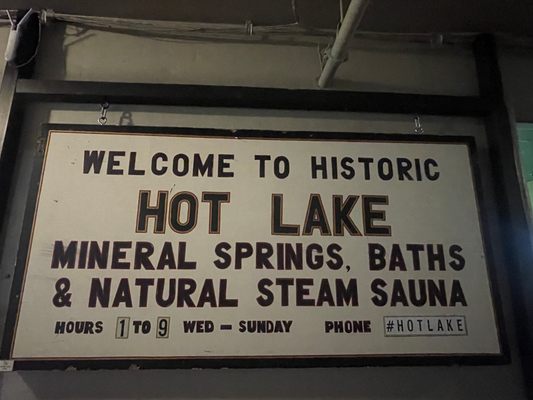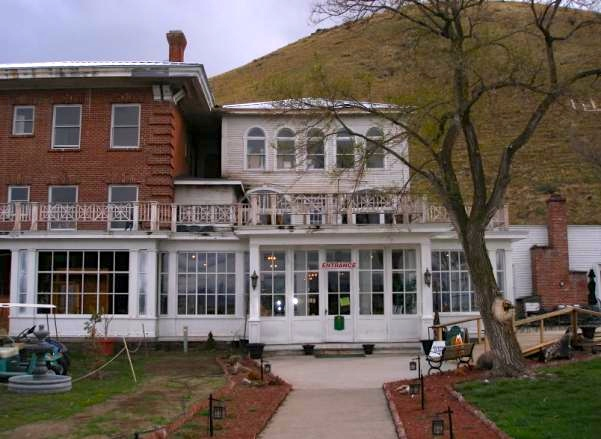About
This turn-of-the-century resort attracted visitors from around the world with its therapeutic waters and medical innovations, with the Mayo Brothers (of the Mayo Clinic) among its most frequent visitors, but after a disastrous fire destroyed half of the building in 1934, the hotel went out of business, and the property operated as a nurse's training school, a retirement home, and even an insane asylum before being abandoned.
Situated between a sprawling hillside and a naturally warm lake named "Ea-Kesh-Pa" by the Nez Perce Tribe, construction on the original buildings of Hot Lake Resort began in 1864. These buildings were later demolished after the Pacific Union Railroad was constructed near the property in 1884, and a fully operative hotel underwent construction in 1903, including an array of bathhouses that drew water from the mineral-rich lakes.
Dr. William Thomas Phy became involved with the hotel shortly afterward, and the initial brick structure was completed with over one hundred guest rooms. Dr. Phy named the resort “Hot Lake Sanitorium,” and expanded it to not only house rooms for over 1,000 guests, but serve medical wards, offices, and a dance hall. Hot Lake became a booming resort for the wealthy and the ill, attracting people from all around the world for its therapeutic waters that were used to treat a variety of ailments. The Mayo Brothers became frequent visitors to the hotel, and many state-of-the-art experimental medical practices were undergone there. Dr. Phy died of pneumonia in 1931, and three years later, a massive fire destroyed the wood-structured wing of the hotel. The 65,000-square-foot brick portion of the building, however, survived the blaze.
After the fire, business began to decline, and the property was used intermittently. It became a nurse’s training center and flight school during World War II. At one time, during a winter typhoid epidemic, the vacant hotel's foyer was used to store the bodies of infection victims until the ground in Union County had thawed enough to dig graves for them.
By 1953, the building was operating as a nursing home, and later as an insane asylum. A short-lived restaurant operated in the building during the late 1970s, and one corner of the building made use of its bath houses in the 1980s before the property was entirely abandoned in 1991, falling victim to vandals and the elements.
The building sat abandoned for over fifteen years, and various stories circulated concerning reported hauntings in the hotel, many linked to its rocky past. It has been rumored to be haunted by old vacationers, a nurse who was scalded to death in the lake, a gardener who committed suicide on the property, and insane people from the building's days as an asylum. When the hotel was originally constructed it acquired a piano formerly owned by Robert E. Lee’s wife, which was said to play by itself on the third floor. Other reports of screaming and crying were reported by onetime owner Donna Pattee and caretaker Richard Owens coming from the hospital's surgery room, as well as rocking chairs moving at their own accord; Pattee and her husband owned the property in the 1970s when it was a restaurant; both they and Owens lived on the second floor of the building at the time. With so much attention given to the property’s reputed hauntings, it was featured on the ABC television series “The Scariest Places on Earth” in 2001.
In 2003, the property was purchased by a family who undertook restoration, replacing over 300 windows and doing extensive work on the building’s roof. Certain wings of the building were open to the public during the renovation in the mid-2000s. The building now currently operates as a bed and breakfast and spa, though its new owners are wary of discussing the building’s darker past.
Related Tags
Community Contributors
Added By
Published
February 10, 2014























































